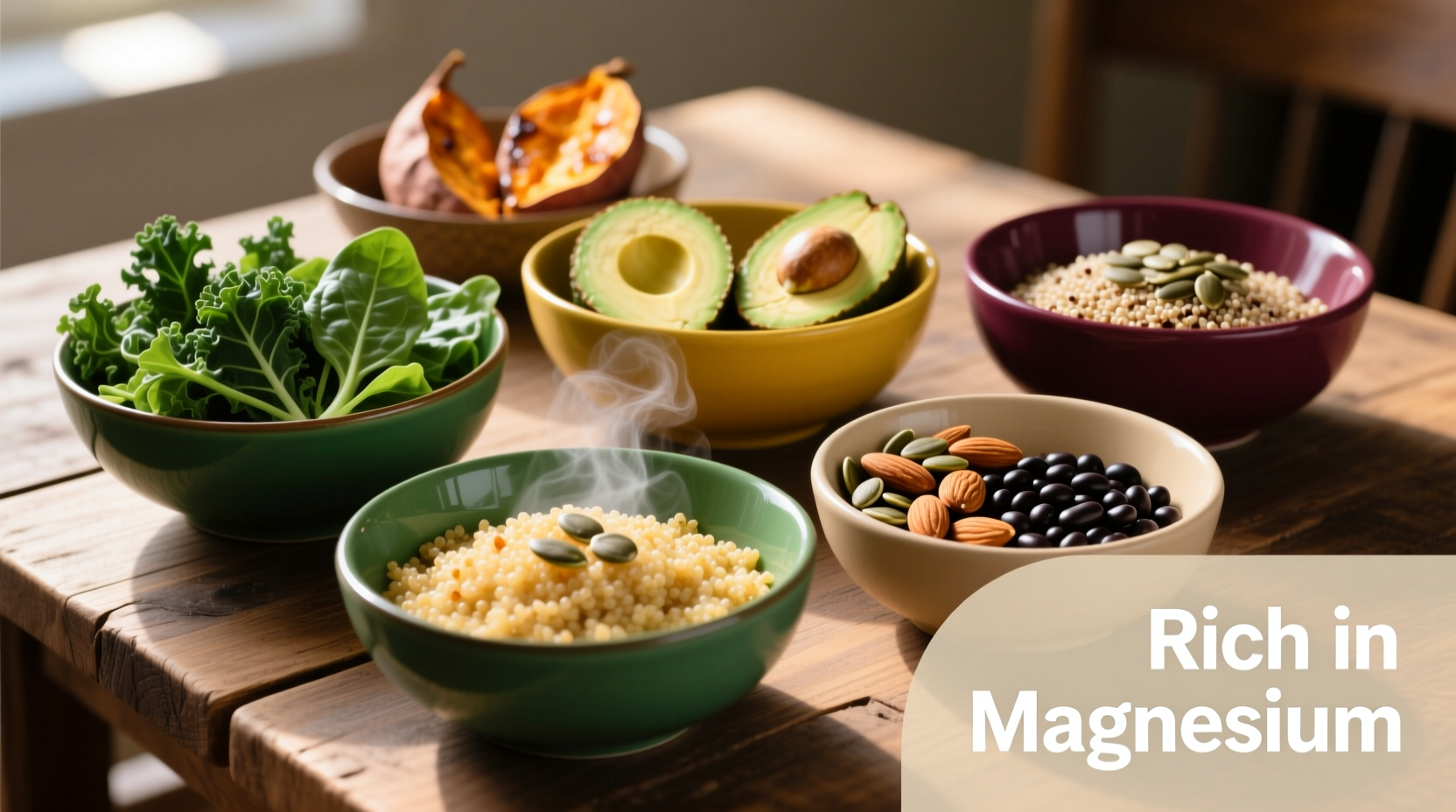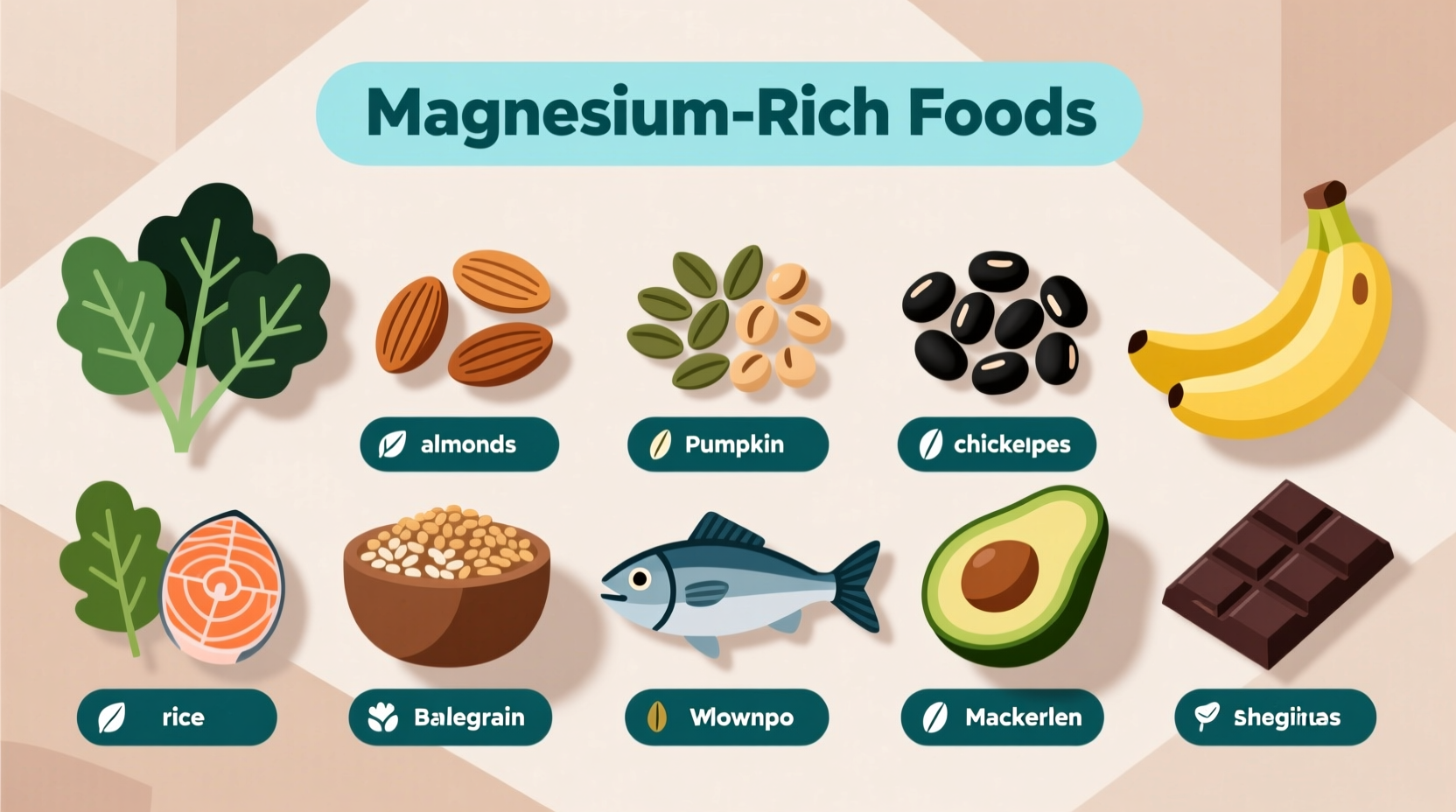Discover how to naturally boost your magnesium intake with science-backed food sources that support muscle function, nerve health, and energy production. This comprehensive guide reveals exactly which foods deliver the highest magnesium content per serving, practical ways to incorporate them into your meals, and little-known factors that affect magnesium absorption.
Why Magnesium Matters for Your Health
Magnesium plays a critical role in over 300 enzymatic reactions in your body, from regulating muscle and nerve function to supporting immune health and blood sugar control. According to the National Institutes of Health, adults need between 310-420mg daily, depending on age and gender. Despite its importance, many people fall short of recommended intake levels, often without realizing it.
Common signs of potential magnesium deficiency include muscle cramps, fatigue, and irregular heartbeat. The good news? You can significantly improve your magnesium status through strategic food choices rather than relying on supplements.
Your Magnesium Food Scorecard: Highest Concentration Sources
Not all magnesium sources are created equal. Some foods deliver significantly more magnesium per serving than others. Here's how common foods compare based on USDA FoodData Central measurements:
| Food Source | Serving Size | Magnesium (mg) | % Daily Value |
|---|---|---|---|
| Pumpkin seeds | 1 ounce (28g) | 156 | 37% |
| Spinach (cooked) | 1/2 cup | 78 | 19% |
| Almonds | 1 ounce (23 nuts) | 76 | 18% |
| Black beans | 1/2 cup | 60 | 14% |
| Avocado | 1 cup | 58 | 14% |
| Quinoa (cooked) | 1 cup | 118 | 28% |
| Dark chocolate (70% cocoa) | 1 ounce | 64 | 15% |
This comparison reveals that seeds and nuts generally provide the most concentrated magnesium sources, followed by leafy greens and legumes. Understanding these relative values helps you make strategic choices when planning magnesium-rich meals.
Maximizing Magnesium Absorption from Food
Simply eating magnesium-rich foods isn't enough—you need to optimize absorption. Research from the European Journal of Clinical Nutrition shows that certain food combinations and preparation methods significantly impact how much magnesium your body actually utilizes.
Include these practical absorption boosters in your routine:
- Pair with vitamin B6 - Foods like bananas, chickpeas, and potatoes enhance magnesium uptake
- Avoid high-fiber meals with calcium supplements - These can compete for absorption pathways
- Soak nuts and seeds - Reduces phytic acid that can bind magnesium
- Choose cooked spinach over raw - Cooking increases bioavailability by breaking down cell walls

Practical Daily Integration Strategies
Transforming this knowledge into daily habits requires simple, sustainable approaches. Here's how to naturally increase magnesium intake throughout your day:
Morning Boost
Start your day with magnesium-enhanced options like adding pumpkin seeds to your yogurt or choosing whole grain toast with avocado instead of standard breakfast fare. A single tablespoon of pumpkin seeds delivers nearly 20% of your daily magnesium needs.
Lunch Solutions
Create magnesium-rich salads with spinach as the base, topped with black beans, almonds, and a lemon-tahini dressing. This combination provides over 200mg of magnesium in one meal while enhancing absorption through complementary nutrients.
Dinner Options
Replace standard side dishes with quinoa or edamame, and incorporate dark leafy greens prepared with healthy fats like olive oil. The fat content helps with mineral absorption while the cooking process makes magnesium more available.
Contextual Considerations for Magnesium Sources
While magnesium-rich foods benefit most people, certain health conditions require special consideration. Individuals with kidney disease should consult their healthcare provider before significantly increasing magnesium intake from foods like nuts and seeds, as impaired kidney function affects mineral processing.
Those following low-FODMAP diets for digestive issues may need to modify legume consumption but can still access magnesium through spinach, pumpkin seeds, and quinoa. Always consider your personal health context when making dietary changes.
Creating Your Magnesium-Rich Meal Plan
Building a balanced approach ensures consistent magnesium intake without overcomplicating your routine. Aim for 2-3 magnesium-rich foods at each meal, rotating through different sources to benefit from complementary nutrients.
For example, a sample day might include:
- Breakfast: Oatmeal topped with sliced banana and almonds
- Lunch: Spinach salad with black beans, pumpkin seeds, and avocado
- Dinner: Baked salmon with quinoa and steamed Swiss chard
- Snack: Dark chocolate square with a handful of cashews
This approach naturally provides over 400mg of magnesium while delivering a wide spectrum of complementary nutrients that support overall health.











 浙公网安备
33010002000092号
浙公网安备
33010002000092号 浙B2-20120091-4
浙B2-20120091-4